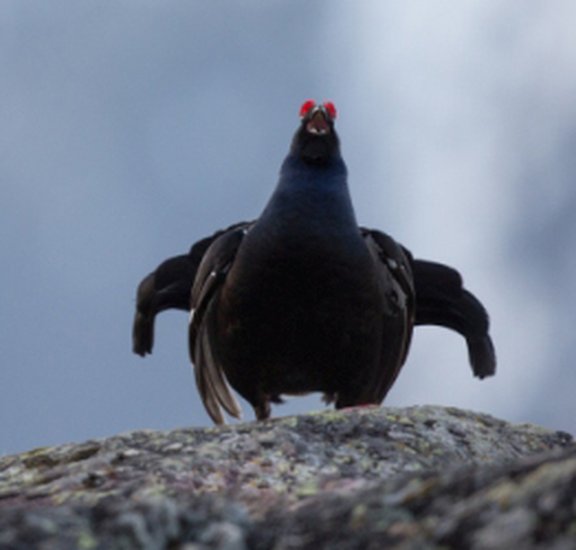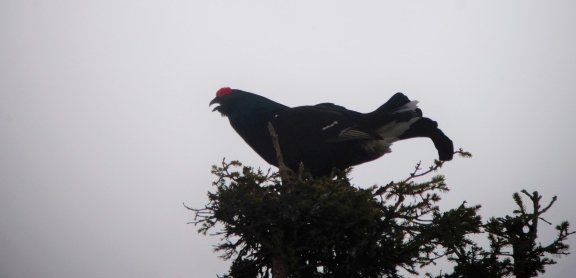I started my PhD thesis in the Molecular Ecology Group in 2019. In my project, I work together with the Tyrolian government (Nature Conservation and Agriculture/Schooling/Hunting & Fisheries) and the Tyrolian hunting society on grouse monitoring. Since 2011, this monitoring takes place in North and East Tyrol to investigate populations of the western capercaillie (Tetrao urogallus) and black grouse (Lyrurus tetrix).

Both species show a negative population trend in many European countries and are listed in the European Birds Directive, mainly because of habitat loss and fragmentation. Therefore, the continuous monitoring of these species is important to investigate the development of their populations.

Traditionally, populations are investigated during the mating season when they are found in so called leks, where males are trying to attract females. As males are easy to count during this period, only numbers of males are estimated which are then used for further conservation plans. With a molecular approach, we can investigate both sexes and get a better insight in the population status. Therefore, we use a non-invasive sampling approach, where faeces and feathers are collected from both species. These samples are analysed with a set of short tandem repeat (STR) markers that are useful for population genetics. We can identify the different individuals and estimate population sizes. Furthermore, we are interested in the connectivity of our sample sites and the dispersal. We investigate the general status of the populations by checking for inbreeding and genetic diversity.
In the second part of my thesis, we want to investigate the populations on a genomic level using a hybridisation ddRAD approach with the faeces samples. This method was developed for museum species, which have low DNA yield and a lot of contaminations, which we both also have in our samples. An established protocol would be a cost-effective way for genomic analysis for larger monitoring programs.
I am very glad to work on a project which has a direct influence on the conservation plan of the species in Tyrol, and I hope I can contribute to the overall knowledge of the species.
Marlene Haider
Research Group: Molecular Ecology

